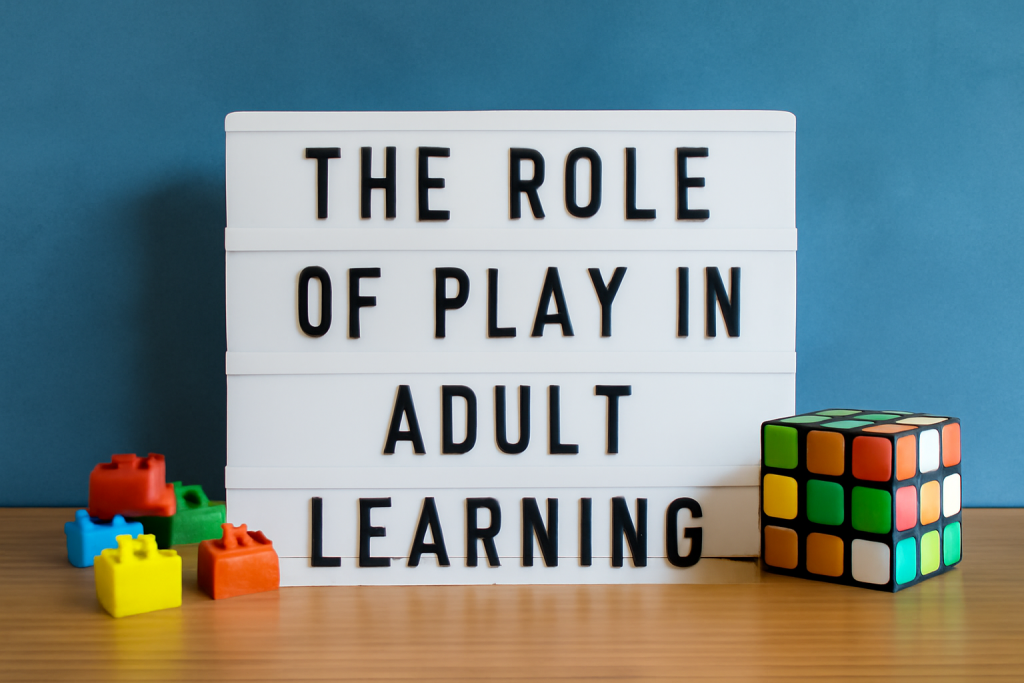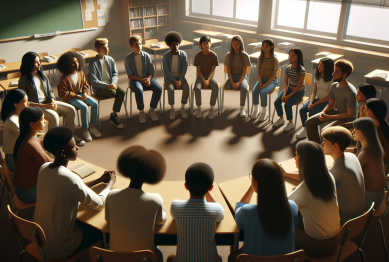When we think of play, it’s easy to imagine children running around, laughing, and experimenting with new ideas. However, play is not just for the young—it has a crucial role in adult learning too. In fact, incorporating play into adult education has become a hot topic in recent years, as more educators and organizations realize the powerful impact it has on creativity, problem-solving, and overall learning effectiveness.
In this article, we’ll explore the importance of play in adult learning, why it’s often overlooked in traditional educational settings, and how incorporating playful activities can enhance engagement, boost productivity, and foster deeper learning. Whether you’re an educator, manager, or lifelong learner, understanding the value of play can help you embrace innovative approaches to learning and growth.

The Science Behind Play and Learning
At its core, play is about exploration and experimentation—two things that are essential for learning. In traditional education, adults often focus on structured, goal-oriented activities that involve reading, lectures, and memorization. While these are important, they tend to overlook the engaging, exploratory aspects of learning. Play, on the other hand, encourages risk-taking, creativity, and hands-on experiences, which are vital for deeper understanding and retention.
1. Play Stimulates Brain Activity
Research has shown that play activates the brain’s reward system, making learning more enjoyable and memorable. According to The National Institute for Play, playful activities trigger dopamine release, which helps with motivation, focus, and memory. In a study by The University of Colorado, adults who participated in games and playful learning activities showed enhanced cognitive flexibility and problem-solving skills. This makes play a valuable tool in adult education, where flexibility in thinking and creative problem-solving is crucial.
2. The Connection Between Play and Emotional Engagement
When people engage in playful learning activities, they often experience an emotional connection to the material, which increases engagement and retention. Studies show that emotions are closely linked to memory formation. In a 2019 study published in The Journal of Applied Cognitive Psychology, it was found that people who had fun while learning were more likely to remember the material long-term. In contrast, traditional learning methods that lack emotional engagement often lead to disengagement and poor memory retention.
3. Play Encourages Active Learning
One of the key benefits of play in learning is that it promotes active participation. Instead of passively receiving information, adults engage with the material through activities, discussions, and hands-on tasks. According to The Educational Researcher, active learning leads to better understanding and retention because it requires learners to apply what they’ve learned in real-world scenarios. Play allows for this kind of active learning in a non-pressured, enjoyable way.
Why Play Is Often Overlooked in Adult Learning
Despite the research supporting its benefits, play is often underutilized in adult learning environments. There are several reasons for this:
1. Societal Expectations of Serious Learning
As adults, we often equate learning with seriousness, focusing on formal education, certifications, and structured programs. This mindset can make play seem frivolous or unprofessional. However, incorporating play doesn’t mean sacrificing seriousness—it simply means finding a more dynamic, engaging way to learn. Playful approaches can coexist with formal learning goals to create a more enjoyable and effective educational experience.
2. Traditional Educational Frameworks
Many adult learning environments still rely on traditional, lecture-based models that don’t allow for play or creativity. These models prioritize structure, content delivery, and assessments over engagement and hands-on learning experiences. As a result, opportunities for play are often overlooked, and learning can become tedious and disengaging.
3. Lack of Awareness or Resources
For some educators and organizations, the idea of incorporating play into adult learning might not be considered because they aren’t aware of its potential benefits. Others may feel they lack the resources or time to implement playful activities. However, as we’ll discuss, there are simple, effective ways to incorporate play into adult education that don’t require major resources or restructuring.
How to Incorporate Play into Adult Learning
Integrating play into adult learning doesn’t have to be complicated or time-consuming. Here are some practical ways to make learning more playful and effective:
1. Gamification of Learning
One of the most popular ways to integrate play into adult learning is through gamification. Gamification involves applying game mechanics—such as scoring, competition, and rewards—to educational content. This method taps into the same motivational aspects as traditional games, encouraging learners to stay engaged and motivated.
-
Tip: You can gamify anything from team-building exercises to training programs. For example, turning a training session into a challenge with points and rewards can make learning more enjoyable and engaging.
2. Use of Playful Learning Activities
Another way to integrate play into adult education is through playful activities like role-playing, simulations, or collaborative problem-solving games. These activities encourage participants to think critically and creatively while allowing them to work together in a low-stakes, enjoyable environment.
-
Tip: Try organizing group discussions or problem-solving exercises in which participants can “play” different roles or perspectives. This fosters creativity, empathy, and collaboration.
3. Incorporate Creative Arts
Creative arts such as drawing, storytelling, or drama exercises allow adults to explore learning through creative expression. These activities can help individuals process and internalize information in a way that feels natural and enjoyable.
-
Tip: If you’re teaching a concept or idea, try asking participants to create a skit, story, or visual representation of the material. This will not only reinforce their learning but also encourage critical thinking and collaboration.
4. Make Learning Social and Collaborative
Play often involves social interaction, and learning is no different. Social and collaborative learning environments, where learners interact and share knowledge, encourage engagement and foster a sense of community. Group discussions, collaborative projects, and peer feedback create a dynamic environment where learning feels less like a solitary task and more like a shared experience.
-
Tip: Foster a sense of community by organizing group work or discussions where participants collaborate and share their thoughts, experiences, and ideas in an informal, fun setting.
The Benefits of Play in Adult Learning
Incorporating play into adult learning brings a wide range of benefits:
-
Improved Engagement and Motivation: Play fosters intrinsic motivation, making learning feel enjoyable and rewarding. Learners are more likely to stay engaged and committed to their educational journey.
-
Enhanced Creativity: Play encourages outside-the-box thinking, helping learners approach problems from different angles and find innovative solutions.
-
Stronger Memory Retention: The emotional and sensory engagement that comes with play improves memory retention, making it easier for learners to recall information.
-
Increased Collaboration and Social Skills: Many playful activities require teamwork and communication, improving interpersonal skills and promoting collaboration.
-
Boosted Well-being: Play can reduce stress and enhance emotional well-being, making it easier for learners to focus and absorb new information.
Conclusion
The benefits of play in adult learning are clear—play not only makes learning more enjoyable, but it also enhances engagement, creativity, and retention. By integrating playful activities into adult education, we can create more dynamic, effective learning experiences that foster deeper understanding and personal growth.
As we continue to innovate in the field of education, embracing the power of play can help us break down the barriers that often make learning feel like a chore. Whether you’re an educator, manager, or lifelong learner, consider how you can incorporate play into your learning approach. Your brain—and your learners—will thank you for it!
Reference
-
The National Institute for Play (2021). The Neuroscience of Play and Learning. Available at: https://nifplay.org/
-
Harvard University (2020). The Role of Play in Cognitive Development and Education. Available at: https://www.harvard.edu/
-
The Journal of Educational Psychology (2019). Play and Its Role in Active Learning. Available at: https://journals.sagepub.com/









